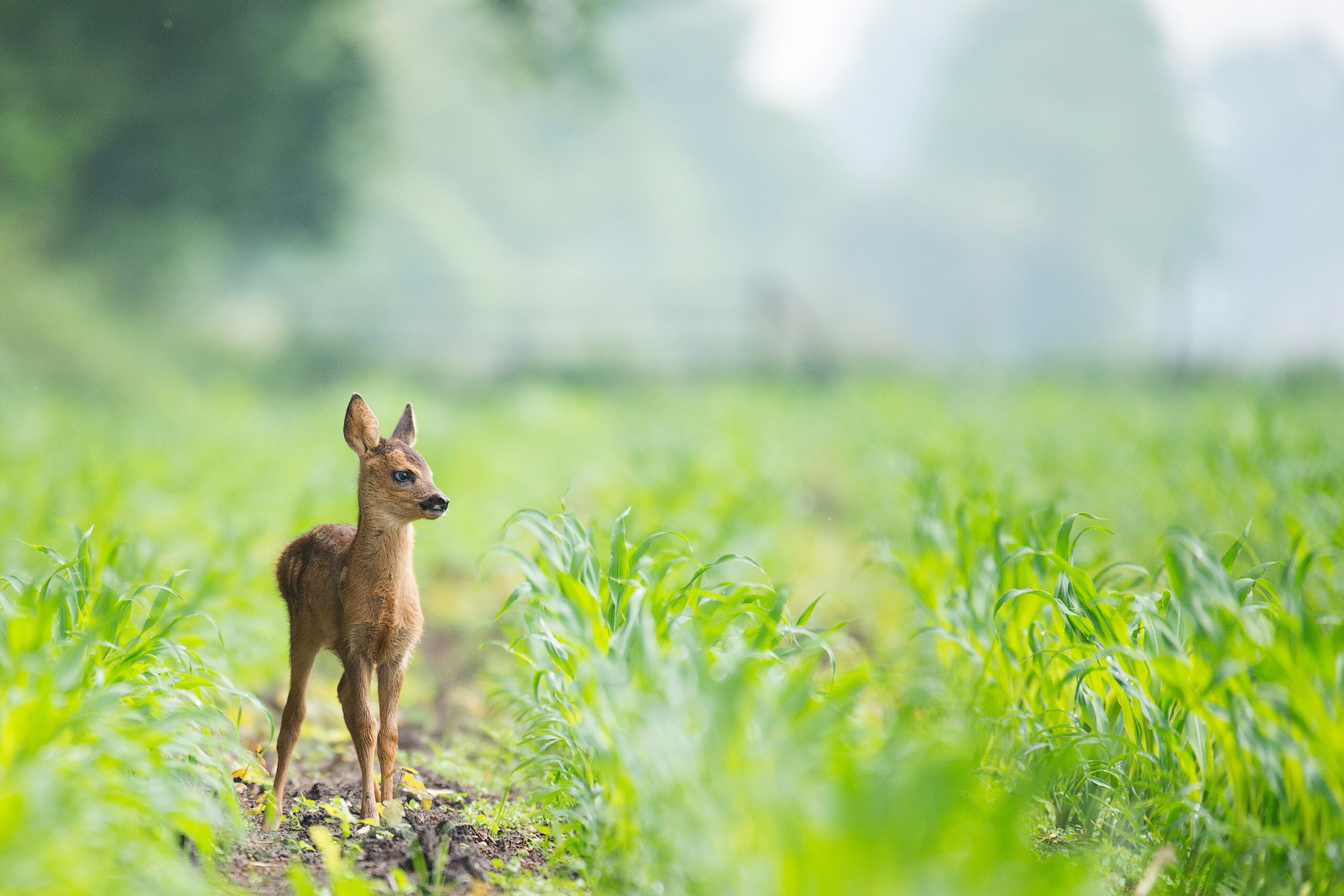If you find yourself exploring the majestic Mount Shasta and come across wildlife, it's important to be prepared and know how to safely interact with these creatures. Whether it's encountering a curious bear or a graceful deer, there are certain precautions you can take to ensure a positive experience for both you and the wildlife. By understanding their behaviors, respecting their space, and keeping a safe distance, you can minimize potential risks and enjoy the beauty of nature without harm. Join us as we explore the safety measures to follow when encountering wildlife on Mount Shasta.

Understanding the Wildlife of Mount Shasta
Mount Shasta, located in Northern California, is not only a popular destination for outdoor enthusiasts but also home to a diverse range of wildlife. Understanding the various animal species that inhabit the area is crucial for ensuring both your safety and their well-being.
Common animal species found at Mount Shasta
Mount Shasta is teeming with wildlife, and some of the common animal species you may encounter include deer, squirrels, foxes, raccoons, coyotes, and a variety of bird species. It is important to remember that these animals are wild and should be treated with caution and respect.
Understanding animal behavior and their habitats
To ensure a safe and enjoyable experience in the wilderness of Mount Shasta, it is essential to have a basic understanding of animal behavior and their habitats. Different animals have distinct behaviors and preferences when it comes to their living spaces. Educating yourself about their habits and preferences can minimize potential conflicts and help you coexist harmoniously with the wildlife.
Wildlife Watching Safely
One of the most exciting aspects of visiting Mount Shasta is the opportunity to observe wildlife in their natural environment. However, it is essential to practice wildlife watching safely to avoid any harm to yourself or the animals.
Pertinence of safe distance to maintain
When observing animals in the wild, it is crucial to maintain a safe distance. This distance varies depending on the species, but as a general rule, you should stay at least 100 yards away from large animals such as deer or coyotes, and even further for larger predators. By keeping a safe distance, you minimize the risk of startling or disturbing the animals and potentially putting yourself in harm's way.
Implications of sudden movements
Sudden movements can startle wildlife and potentially lead to dangerous situations. Avoid making sudden gestures or loud noises that could alarm the animals. Move slowly and deliberately, giving the animals enough time to observe your presence and adjust to it. By exhibiting calm and non-threatening behavior, you increase the chances of having a peaceful wildlife encounter.
Significance of observing, not disturbing wildlife
While it can be tempting to interact with wildlife, it is crucial to remember that they are not domesticated pets. It is essential to observe wildlife from a distance and avoid any actions that may disturb or alter their natural behavior. Feeding, touching, or attempting to approach wild animals can be dangerous for both you and the animals. Admire them from afar and allow them to carry on with their daily routines undisturbed.
Camping Safely around Wildlife
Camping in the wilderness of Mount Shasta offers a unique opportunity to immerse yourself in nature. However, it is important to take precautions to ensure your safety and minimize human-wildlife conflicts.
Choosing an appropriate site
When selecting a camping site, consider the proximity to wildlife habitats. It is advisable to choose a designated campground with established infrastructure to minimize encounters with potentially dangerous animals. By staying in designated areas, you increase the likelihood of a peaceful coexistence with wildlife.
Securing food and belongings
Properly storing your food and other belongings is essential when camping around wildlife. Animals may be attracted to the smell of food, so it is crucial to keep it locked away in airtight containers or suspended from trees using bear-resistant methods. Additionally, ensure that garbage is properly disposed of to prevent animals from being enticed into your campsite.
Understanding that wild animals aren’t pets
It is important to remember that wild animals are just that – wild. While they may appear cute or harmless, they can be unpredictable and potentially dangerous. Avoid approaching or attempting to interact with wildlife, especially if they appear to be showing signs of aggression. Always maintain a safe distance and observe from afar.
Hiking and Trail Tips for Safety
Hiking in the stunning landscapes of Mount Shasta can be an incredible experience, but it is vital to prioritize safety when encountering wildlife on the trails.
Importance of sticking to trails
Sticking to designated trails not only ensures minimal impact on the environment but also reduces the chances of unexpected wildlife encounters. Trails are designed to offer a safe and controlled path through the wilderness, allowing you to appreciate the natural beauty while minimizing the potential for unwanted interactions with wildlife.
Role of noise in alerting animals
Animals rely on their senses to detect potential threats, and noise can inadvertently serve as a warning signal to them. It is advisable to make some noise while hiking, especially in areas with dense vegetation or limited visibility, to alert wildlife of your presence. This helps prevent surprising them, reducing the likelihood of aggressive behavior.

Dealing with Aggressive Wildlife
While encounters with aggressive wildlife are rare, it is important to be prepared and know how to react if such a situation arises.
Identifying signs of aggression
Animals may exhibit signs of aggression if they feel threatened or cornered. These signs can include growling, hissing, raised fur or feathers, bared teeth, or charging. It is important to be aware of these warning signs and take appropriate action to ensure your safety.
Actions to take in case of aggressive wildlife
If you encounter aggressive wildlife, it is crucial to remain calm and avoid panicking. Stand your ground, make yourself appear larger by raising your arms, and speak in a firm and assertive voice to assert your dominance. Slowly retreat from the animal without turning your back to it, maintaining eye contact if possible. Do not run, as this may trigger the predator instinct in some animals.
On Spotting Bears and Large Predators
Mount Shasta is home to a variety of large predators, including bears. Understanding their behavior and knowing how to react upon encountering them is of utmost importance for personal safety.
Understanding bear behavior
Bears are intelligent and powerful creatures, and encounters with them should be handled with caution. Typically, bears will avoid human contact, but if startled or provoked, they may exhibit defensive behavior. It is essential to recognize the difference between defensive and aggressive behavior to appropriately respond.
Reaction strategy upon encountering bears
If you spot a bear, it is important to remain calm and avoid sudden movements or loud noises. Back away slowly, always keeping the bear within your line of sight. Do not run, as this may trigger the bear's predatory instincts. If the bear approaches, speak in a calm and firm voice while continuing to back away. Carry bear deterrents, such as bear spray, as a last resort in case the bear becomes aggressive.
Use of defensive deterrents
Defensive deterrents, such as bear spray, can be an effective tool in keeping both you and the wildlife safe. It is important to familiarize yourself with how to properly use bear spray before venturing into the wilderness. Bear spray should be easily accessible and kept in a holster or belt while hiking. However, it is crucial to remember that bear spray is intended for defensive use only and should be used as a last resort.

The Etiquette of Bird Watching
Bird watching is a popular activity in the natural beauty of Mount Shasta. To make the most of this experience and ensure the well-being of the birds, it is important to abide by some guidelines.
Importance of maintaining quiet
Birds are generally sensitive to loud noises and sudden movements. To have the best chance of observing a wide variety of bird species, it is important to maintain a quiet presence. Keep conversations to a minimum volume and avoid sudden gestures or noises that may startle the birds.
Understanding bird behavior
Each bird species has its own unique behavior, and understanding these behaviors can enhance your bird watching experience. Educate yourself about common local bird species, their natural habitats, and feeding patterns. This knowledge will help you identify and appreciate the birds you encounter.
Best practices while bird watching
To maximize your bird watching experience, it is essential to respect the birds' habitats and minimize your impact. Stick to designated trails and viewing areas, use binoculars or telephoto lenses instead of getting too close to the birds, and refrain from disturbing nests or natural habitats. Remember, observation should always prioritize the well-being and conservation of the birds.
Role of Proper Clothing and Gear
When venturing into the wilderness of Mount Shasta, wearing appropriate clothing and having the right gear is crucial for your safety and comfort.
Importance of clothing visibility
Wearing brightly colored clothing, especially in areas with dense vegetation, can help you stand out and reduce the chances of unexpected encounters with wildlife. Avoid wearing excessive cologne or perfume, as some animals may be attracted to strong scents.
Carrying appropriate safety gear
In addition to appropriate clothing, it is important to carry essential safety gear when exploring Mount Shasta. This may include a first-aid kit, a map and compass or GPS device, a whistle or signaling device, and a flashlight or headlamp. These items will ensure you are prepared for unforeseen circumstances and can help you navigate safely in the wilderness.
Understanding the Risks Involved
While taking necessary precautions can significantly reduce the risks associated with encountering wildlife, it is important to be aware of the potential dangers.
Knowing what to do in case of an attack
In the rare event of an animal attack, it is crucial to know how to react swiftly and effectively. Different wildlife encounters may require different responses, so it is essential to educate yourself about the specific risks associated with each animal species. Knowing whether to play dead, fight back, or use defensive measures like bear spray can make a critical difference in ensuring your safety.
Recognizing and respecting territorial signals
Animals, particularly during certain times of the year, may display territorial behavior. Understanding and respecting these signals can minimize the risk of aggressive encounters. If you notice warning signs, such as growling, lunging, or raised fur, it is important to give the animal space and avoid any actions that may be perceived as a threat.
Post-Encounter Measures
After encountering wildlife, it is important to take certain measures to ensure the well-being of both yourself and the animals.
Reporting aggressive encounters
If you have had an aggressive encounter with wildlife, it is important to report the incident to the appropriate authorities. This information can help wildlife management agencies monitor and respond to potential threats in the area, ensuring the safety of future visitors and the preservation of the wildlife.
Identifying any possible infections or diseases from wildlife
Wild animals can carry diseases or infections that can be transmitted to humans. After any encounter with wildlife, it is advisable to thoroughly clean and disinfect any wounds or scratches. Additionally, if you experience any unusual symptoms or illness following an encounter, seek medical attention promptly and inform your healthcare provider about your wildlife encounter.
In conclusion, Mount Shasta offers a unique opportunity to immerse yourself in the stunning wilderness and observe a wide array of wildlife. By understanding the animals' behavior, practicing safe wildlife watching, camping responsibly, and hiking with caution, you can create memorable experiences while minimizing potential risks and ensuring the well-being of both yourself and the wildlife. Remember to always respect the natural habitats and minimize your impact, so future generations can continue to enjoy the beauty and diversity of Mount Shasta's wildlife.
